Single-Nucleus RNA Sequencing and Spatial Transcriptomics Reveal Cellular Heterogeneity and Intercellular Communication Networks in the Hypothalamus-Pituitary-Ovarian Axis of Pregnant Mongolian Cattle
- PMID: 40805067
- PMCID: PMC12345466
- DOI: 10.3390/ani15152277
Single-Nucleus RNA Sequencing and Spatial Transcriptomics Reveal Cellular Heterogeneity and Intercellular Communication Networks in the Hypothalamus-Pituitary-Ovarian Axis of Pregnant Mongolian Cattle
Abstract
The hypothalamus-pituitary-ovarian (HPO) axis orchestrates reproductive functions through intricate neuroendocrine crosstalk. Here, we integrated single-nucleus RNA sequencing (snRNA-seq) and spatial transcriptomics (ST) to decode the cellular heterogeneity and intercellular communication networks in the reproductive systems of pregnant Mongolian cattle. We retained a total of 6161 high-quality nuclei from the hypothalamus, 14,715 nuclei from the pituitary, and 26,072 nuclei from the ovary, providing a comprehensive cellular atlas across the HPO axis. In the hypothalamus, neurons exhibited synaptic and neuroendocrine specialization, with glutamatergic subtype Glut4 serving as a TGFβ signaling hub to regulate pituitary feedback, while GABAergic GABA1 dominated PRL signaling, likely adapting maternal behavior. Pituitary stem cells dynamically replenished endocrine populations via TGFβ, and lactotrophs formed a PRL-PRLR paracrine network with stem cells, synergizing mammary development. Ovarian luteal cells exhibited steroidogenic specialization and microenvironmental synergy: endothelial cells coregulated TGFβ-driven angiogenesis and immune tolerance, while luteal-stromal PRL-PRLR interactions amplified progesterone synthesis and nutrient support. Granulosa cells (GCs) displayed spatial-functional stratification, with steroidogenic GCs persisting across pseudotime as luteinization precursors, while atretic GCs underwent apoptosis. Spatial mapping revealed GCs' annular follicular distribution, mediating oocyte-somatic crosstalk, and luteal-endothelial colocalization supporting vascularization. This study unveils pregnancy-specific HPO axis regulation, emphasizing multi-organ crosstalk through TGFβ/PRL pathways and stem cell-driven plasticity, offering insights into reproductive homeostasis and pathologies.
Keywords: cattle; hypothalamic–pituitary–ovarian axis; reproductive regulation; single-nucleus RNA sequencing; spatial transcriptomics.
Conflict of interest statement
Author B.L. was employed by the company Inner Mongolia Ben Niu Technology Co., Ltd., Hohhot 010018, China. The remaining authors declare that the research was conducted in the absence of any commercial or financial relationships that could be construed as a potential conflict of interest.
Figures

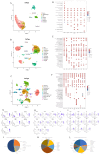
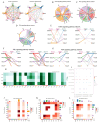
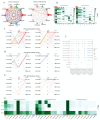
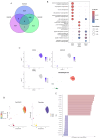



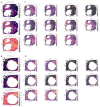
Similar articles
-
Deciphering the tumor immune microenvironment: single-cell and spatial transcriptomic insights into cervical cancer fibroblasts.J Exp Clin Cancer Res. 2025 Jul 5;44(1):194. doi: 10.1186/s13046-025-03432-5. J Exp Clin Cancer Res. 2025. PMID: 40616092 Free PMC article.
-
Impact of Heat Stress on Gene Expression in the Hypothalamic-Pituitary-Ovarian Axis of Hu Sheep.Animals (Basel). 2025 Jul 25;15(15):2189. doi: 10.3390/ani15152189. Animals (Basel). 2025. PMID: 40804979 Free PMC article.
-
Silk-Ovarioids: establishment and characterization of a human ovarian primary cell 3D-model system.Hum Reprod Open. 2025 Jul 10;2025(3):hoaf042. doi: 10.1093/hropen/hoaf042. eCollection 2025. Hum Reprod Open. 2025. PMID: 40799620 Free PMC article.
-
Beyond apoptosis: evidence of other regulated cell death pathways in the ovary throughout development and life.Hum Reprod Update. 2023 Jul 5;29(4):434-456. doi: 10.1093/humupd/dmad005. Hum Reprod Update. 2023. PMID: 36857094 Free PMC article.
-
Controlled ovarian stimulation protocols for assisted reproduction: a network meta-analysis.Cochrane Database Syst Rev. 2025 Jul 1;7(7):CD012586. doi: 10.1002/14651858.CD012586.pub2. Cochrane Database Syst Rev. 2025. PMID: 40590303 Review.
References
-
- Fedotova G.V., Slozhenkina M.I., Tsitsige, Natyrov A.K., Erendzhenova M.V. Comparative analysis of economic and biological features of Kalmyk and Mongolian cattle breeds. IOP Conf. Ser. Earth Environ. Sci. 2020;548:082076. doi: 10.1088/1755-1315/548/8/082076. - DOI
Grants and funding
LinkOut - more resources
Full Text Sources
Medical

